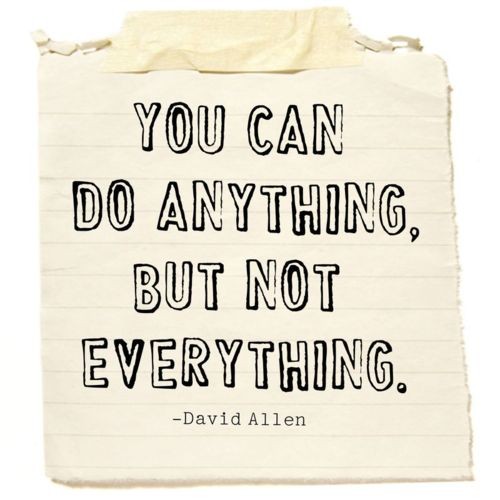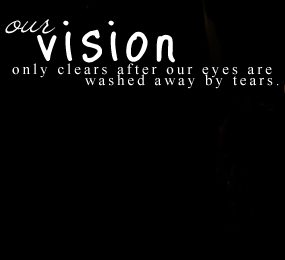What is “founder’s syndrome”?
Founder’s syndrome occurs when an organization or team operates primarily according to the personality of a key person, such as the founder or director, rather than focused on its overall mission.
Dealing with founder’s syndrome is a typical problem among start-up or small organizations. It is also often a natural part of an organization’s life cycle. The start-up or growth phase of any initiative requires a strong, passionate personality—someone who can make fast decisions and motivate people to action.
 Once this period is over, however, the decision-making needs of the organization or team change. This requires mechanisms for shared responsibility and authority. It is when those decision-making mechanisms don’t change that founder’s syndrome becomes an issue.
Once this period is over, however, the decision-making needs of the organization or team change. This requires mechanisms for shared responsibility and authority. It is when those decision-making mechanisms don’t change that founder’s syndrome becomes an issue.
Founders Syndrome is no one’s fault—no founder sets out to damage his or her organization. Staff and board members or leadership who avoid responsibility mare often also part of the problem.
There are actions that founders, board members, and staff can take to avoid the problems of founder’s syndrome. Read on…
*********************************
What are the symptoms of founder’s syndrome?
- The founder is at the center of all decision-making. Decisions are made quickly, with little input from others. No one really seems to know what’s going on. In other words, everyone who is NOT the founder is only a support to the founder.
- Planning is not done collectively and any ideas that do not come from the founder usually don’t go very far. People can even become afraid of the founder.
- The board is recruited by the founder, rather than by the board itself. Often they are friends of the founder, who may have been there from the beginning. Staff may also have been chosen due to their personal loyalty to the founder.
- The board’s role is to “support” the founder, rather than to lead the organization. They are often a rubber stamp board, having little understanding of the work the organization does. Their commitment is not to the mission, but to the founder.
- Board and staff members are unable to answer basic questions about the organization, such as the size of the budget, the major funding sources, the extent of the programs, without checking first with the founder.
- A casual observer would hear a lot of “I, me, my” in conversation. “My staff…” “My organization…” “My vision…” It would also not be unusual to hear the words, “Because that is how we have always done it.”
- There is resistance to any changes that will result in a (perceived or actual) loss of control. There can be a resistance to new staff or outsiders because they are perceived as a threat. There is a (perceived or actual) fear that the organization will become “something we no longer recognize.”
Some may ask, “So what’s wrong with that?” And the answer is simple: If the founder is hit by a truck tomorrow, the team or organization is at risk of not being able to continue its programs. All the good work people have done over the years is in danger of ending.
*********************************
Positive and negative characteristics of founders
Founders are dynamic, driven, and decisive. They carry clear vision of what their organization can be. They know their community’s needs and are passionate about meeting those needs.
However, founders can also:
- Be skeptical about planning, policies, and procedures. They claim, “These processes weigh me down.”
- Make reactive, crisis-driven decisions with little input from others.
- Hand pick their staff. See these people as working for the founder as much as working towards the organization’s mission. Count on whomever seems most loyal and accessible.
- Motivate by fear and guilt, often without realizing it.
- Attract board members through personal connections rather than the organization’s mission. Work to remove board members who disagree with founder.
- Have a very difficult time letting go of the strategies that worked previously in the organization, even if they know they organization can no longer function this way.
*********************************
Am I really that kind of founder?
The following questions may help you determine if you are indeed that kind of founder. If you are brave, you might also ask these of those around you. You may be surprised at what you learn.
- Can you say (and mean it), “When I’m gone, things will be done differently, and that’s ok”?
- Can you separate the issues your organization or team addresses from your own stake in the issues? From your stake in the organization?
- Do you use the words, “my organization,” “my team” or “my staff”?
- Do you brag about the fact that the staff or organization “needs” you? Do you also complain about this? Can you envision what your life would be like if you didn’t have the organization or team to run? Is it part of who you are?
- Are you afraid that if you leave, the organization will change into something that is no longer what you want it to be?
*********************************
From one founder to another
For me, this issue is personal.
Let me write this as someone who has learned the hard way.
Think first about the community, which is why you created the organization in the first place.
Have you prepared the organization to survive (and dare I say thrive) without your presence? Can you think of leaving? Would the organization survive without you? If your answer is “no,” then you have somehow made the organization about yourself, rather than about the mission.
 This may be difficult to hear—but it’s not about you, nor was it about me. It is hard to acknowledge that no matter how much you put into nurturing the organization you founded, none of that really matters in the long run. The sad truth is that nobody owes us anything for our sacrifices. It cannot be about our emotional needs or the recognition or gratitude we think we should get. The world doesn’t owe us anything for having founded our organizations.
This may be difficult to hear—but it’s not about you, nor was it about me. It is hard to acknowledge that no matter how much you put into nurturing the organization you founded, none of that really matters in the long run. The sad truth is that nobody owes us anything for our sacrifices. It cannot be about our emotional needs or the recognition or gratitude we think we should get. The world doesn’t owe us anything for having founded our organizations.
Once you have “birthed” an organization, it is no longer your baby. Just as it is with your own children, they are their own persons. We can guide our children, teach them, nurture them. But our son or daughter is not ours, as it is with our own organizations.
So it is irresponsible to run our organizations as if we will be around forever. It is simply not fair to the organization, nor to those who benefit from the work we do. The only responsible approach, therefore, is to raise this child or organization to NOT need us.
Yes, it was your vision that founded the organization in the first place. But as the organization grows, your vision isn’t nearly as important as the organization’s and the community’s vision.
Your organization is an amazing gift for your community. But now that it is used and depended upon by others, it is no longer yours. It belongs to the community. Just think—your greatest gift may be by inspiring others to keep your vision alive!
*********************************
To learn how organizations and teams can recover from founder’s syndrome, see Part II here!
This two-part post is from a Firelight Newsflash that was originally shared with grassroots organizations working with children, families, and communities in southern and east Africa. It was adapted from managementhelp.org and the last section from a great piece by @HildyGottlieb at help4nonprofits.com.

Founder syndrome is a real problem that affects sustainability of many small, medium and even large organizations that evolve around individual(s).
It is one thing that Boards need to help founders grow out of, that is if they too are not caught up in the same.
The success of leadership, in this case of an organization is not measured by how well and great the problems have been implemented in the life time of the leader/ founder, but how the organization sustains the gains of the leader and grows even more after the leader.
Founders need to deliberately share and nurture the Vision and Mission of the organization in those they work with and those who will come thereafter.
Thanks for this article which should be shared with many small, medium and even large organizations.
Pingback: Links zum Wochenende #30
Pingback: Gabe’s Startup Movie Picks: “Startup.com” (2001) | Seoulicon Valley Forum
Pingback: Fortify your org against “Founder-itis” with these 2 strategies | Ankhacia RisingAnkhacia Rising
Pingback: Famous founders: A blessing or a curse? | WhyDev
I am Executive Director of a national non-profit organization in Canada. We publish a quarterly magazine. I would like to reprint the article: “Founder’s Syndrome: How Organizations Suffer…and Can Recover (Part I)” in our magazine, but I am confused about who I should contact for permission. Can you please help me? Keep up the great work!
Karen Oliver
Pingback: Fortify your org against “Founder-itis” with these 2 strategies | DMarieThomas.org
Pingback: “But wait, I’m woke!”: The trials of the white male manager – Civil Society Futures